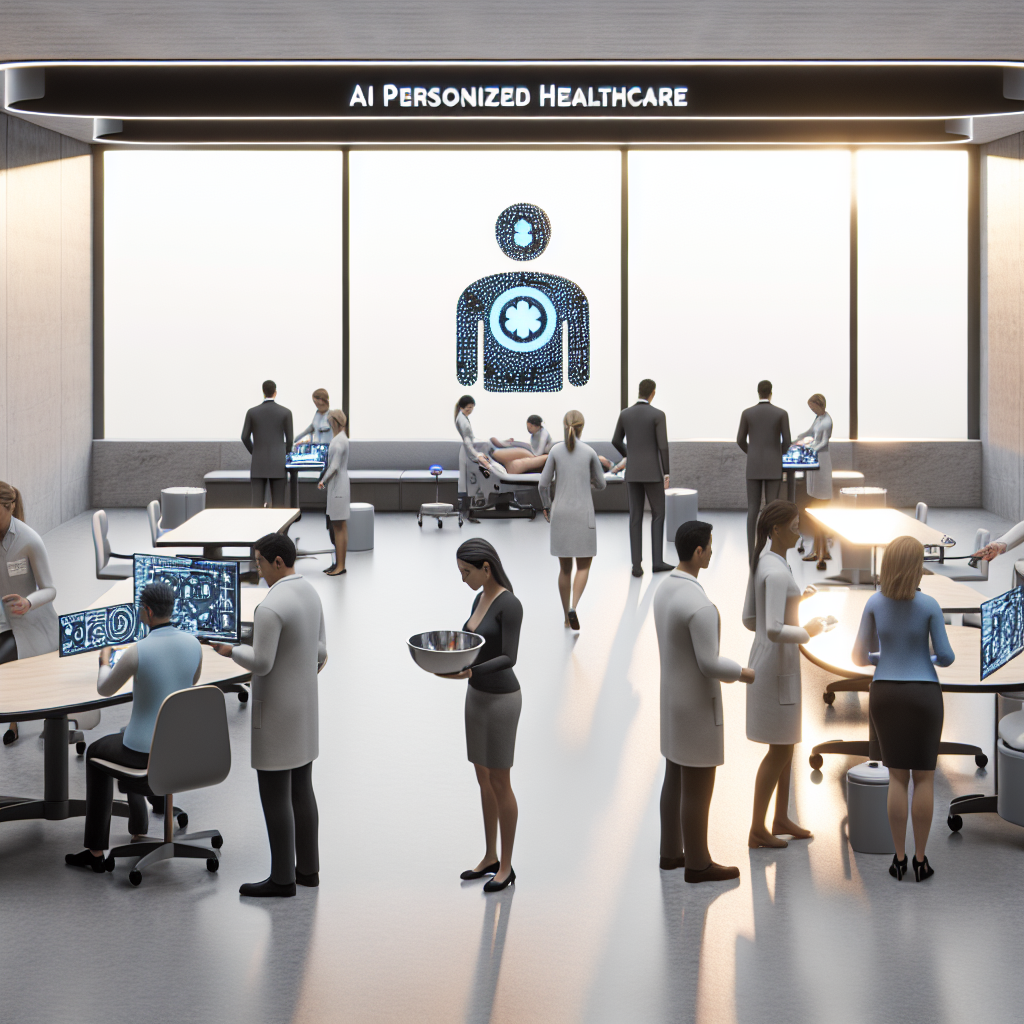-
- AI-Driven Personalized Healthcare: A Technical Guide
- Understanding AI-Driven Personalized Healthcare
- Configuration Steps for Implementing AI-Driven Personalized Healthcare
- Step 1: Data Collection
- Step 2: Data Preprocessing
- Step 3: Model Selection
- Step 4: Model Training
- Step 5: Model Evaluation
- Step 6: Deployment
- Practical Examples of AI-Driven Personalized Healthcare
- Example 1: Cancer Treatment
- Example 2: Chronic Disease Management
- Best Practices for AI-Driven Personalized Healthcare
- Case Studies and Statistics
- Conclusion
AI-Driven Personalized Healthcare: A Technical Guide

In recent years, the healthcare industry has witnessed a transformative shift towards personalized medicine, driven by advancements in artificial intelligence (AI). AI-driven personalized healthcare leverages data analytics, machine learning, and predictive modeling to tailor medical treatments and interventions to individual patients. This approach not only enhances patient outcomes but also optimizes resource allocation within healthcare systems. In this guide, we will explore the configuration steps, practical examples, best practices, and relevant case studies to help you implement AI-driven personalized healthcare solutions effectively.
Understanding AI-Driven Personalized Healthcare
AI-driven personalized healthcare refers to the use of AI technologies to analyze vast amounts of patient data, including genetic information, medical history, and lifestyle factors, to provide tailored healthcare solutions. This approach allows healthcare providers to predict disease risk, recommend personalized treatment plans, and improve patient engagement.
Configuration Steps for Implementing AI-Driven Personalized Healthcare
Step 1: Data Collection
Gather comprehensive patient data from various sources, including electronic health records (EHRs), wearable devices, and genomic databases.
- Ensure data privacy and compliance with regulations such as HIPAA.
- Utilize APIs to integrate data from different healthcare systems.
Step 2: Data Preprocessing
Clean and preprocess the collected data to ensure accuracy and consistency.
- Remove duplicates and irrelevant information.
- Normalize data formats for compatibility.
Step 3: Model Selection
Select appropriate AI models based on the specific healthcare application.
- For predictive analytics, consider using regression models or decision trees.
- For classification tasks, explore neural networks or support vector machines.
Step 4: Model Training
Train the selected models using historical patient data.
from sklearn.model_selection import train_test_split
from sklearn.ensemble import RandomForestClassifier
# Load your dataset
data = load_data('patient_data.csv')
X = data.drop('target', axis=1)
y = data['target']
# Split the data
X_train, X_test, y_train, y_test = train_test_split(X, y, test_size=0.2)
# Train the model
model = RandomForestClassifier()
model.fit(X_train, y_train)Step 5: Model Evaluation
Evaluate the model’s performance using metrics such as accuracy, precision, and recall.
from sklearn.metrics import classification_report
# Make predictions
y_pred = model.predict(X_test)
# Evaluate the model
print(classification_report(y_test, y_pred))Step 6: Deployment
Deploy the trained model into a production environment where it can be accessed by healthcare providers.
- Utilize cloud services for scalability and accessibility.
- Implement APIs for seamless integration with existing healthcare systems.
Practical Examples of AI-Driven Personalized Healthcare
Example 1: Cancer Treatment
AI algorithms analyze genomic data to identify mutations in cancer patients, allowing oncologists to recommend targeted therapies. For instance, IBM Watson for Oncology uses AI to assist doctors in selecting personalized treatment plans based on a patient’s unique genetic profile.
Example 2: Chronic Disease Management
Wearable devices collect real-time health data, which AI analyzes to provide personalized recommendations for managing chronic conditions like diabetes. Companies like Livongo use AI to deliver tailored insights and interventions to patients, improving their health outcomes.
Best Practices for AI-Driven Personalized Healthcare
- Prioritize data security and patient privacy throughout the implementation process.
- Engage healthcare professionals in the development and deployment of AI solutions.
- Continuously monitor and update AI models to adapt to new data and changing patient needs.
- Foster collaboration between data scientists and healthcare providers to ensure practical applicability.
Case Studies and Statistics
A study published in the journal Nature Medicine found that AI algorithms could predict patient outcomes with an accuracy of up to 90% in certain cancer types. Additionally, a report by McKinsey & Company estimates that AI could potentially create $100 billion in value for the healthcare industry by 2025 through improved patient outcomes and operational efficiencies.
Conclusion
AI-driven personalized healthcare represents a significant advancement in the way medical care is delivered. By following the outlined configuration steps, leveraging practical examples, and adhering to best practices, healthcare providers can harness the power of AI to improve patient outcomes and optimize healthcare delivery. As the technology continues to evolve, staying informed and adaptable will be crucial for successfully implementing AI-driven solutions in personalized healthcare.